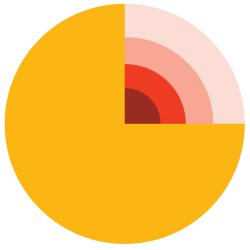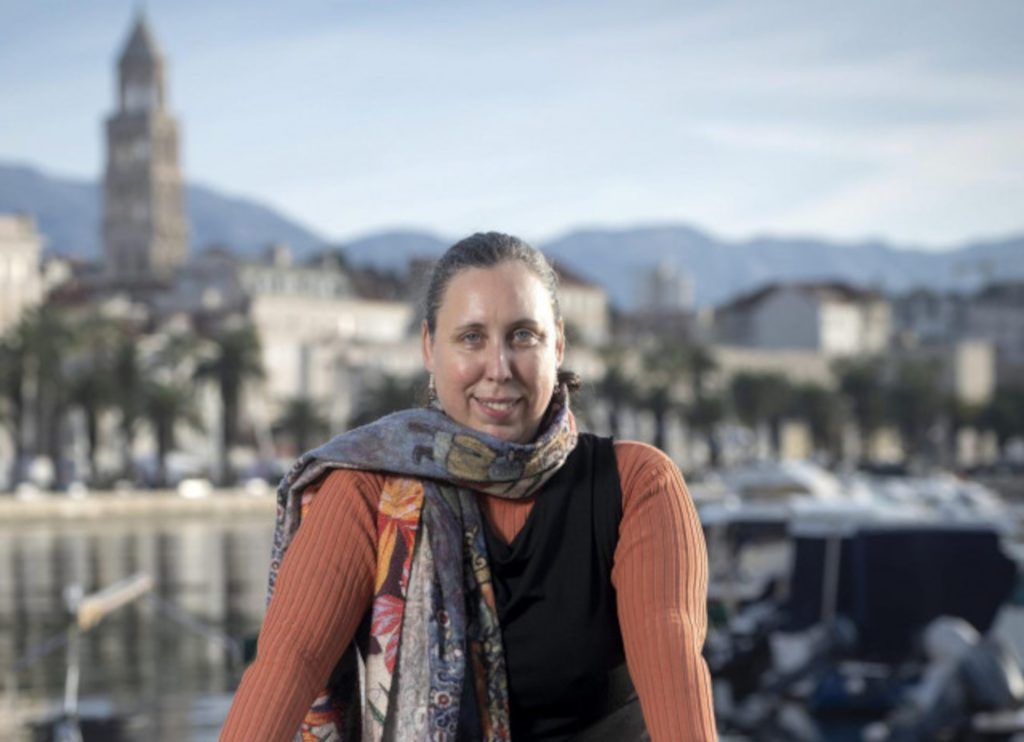Clea Lumina Denamiel is an accomplished engineer deeply involved in oceanography and tsunami research. Currently working at the Ruđer Bošković Institute, in Croatia, she brings a unique perspective to the ChEESE-2P project with her expertise in atmosphere-ocean-wave modeling. Holding two master’s degrees and a PhD, her career has evolved over the past decade, focusing on numerical modeling and coastal hazard assessments.
In this interview from the Meet the Researcher series, learn about Clea’s journey from engineering to addressing global coastal hazards and how she contributes to advancing tsunami modeling in the ChEESE project.
You’re an engineer. How did you begin researching oceanography and tsunamis, and what excites you most about your work?
In France, I am what is known as a “doctor engineer,” which means that I hold two master’s degrees (one in engineering and one in science) and a PhD. My love and passion for numerical modeling and atmospherically driven coastal hazards (including meteo-tsunamis) truly grew during my master’s studies in engineering school. This is why, after earning my PhD in geosciences, I built solid multidisciplinary skills in atmosphere-ocean-wave modeling from the mesoscale to climate scale, in uncertainty quantification, and in probabilistic coastal hazard assessments during my 10 years of nomadic work experience as both an engineer and a researcher.
You’ve been working on model developments for the Adriatic Sea and Coast, specifically the AdriSC modeling suite. Can you highlight some of your key findings?
The main challenge I wanted to tackle by implementing the AdriSC modeling suite was to demonstrate that, based on a modular approach, a unique atmosphere-ocean sub-kilometer-scale model could be used for short-term forecasts, early warning systems, climate change studies, and risk assessments. So far, the key findings from using the AdriSC model are that:
- In the Adriatic, only kilometer-scale models can represent the atmosphere-ocean dynamics driven by extreme events (e.g., windstorms, dense water formation).
- Implementing the pseudo-global warming methodology, widely used in the atmospheric climate community, in ocean models was possible and led to a new understanding of the long-term impact of climate change on ocean dynamics.
- Meteo-tsunamis could be forecasted by combining deterministic and stochastic models to account for the uncertainty in modeling the atmospheric forcing.
- The impact of climate change on meteo-tsunami events could be assessed with the AdriSC model via an event-based downscaling approach.
How do numerical models help improve the effectiveness of preparedness and early warning systems for tsunamis?
For rare extreme events like (meteo-)tsunamis, observations are really scarce and difficult to collect. It should also be noted that sustaining observation networks is costly, and not every country can afford this extra burden. Implementing numerical models is often the only way to evaluate the impact of all potential events that can take place in a specific area. In particular, numerical models are used to build hazard maps and so-called surrogate models (or emulators), which help prepare for and mitigate the impact of potential events when no event is taking place, and to assess, in a few minutes, the danger to the population when an event is (about to) occur.
What are the main responsibilities of the Ruđer Bošković Institute in the ChEESE-2P project?
The main responsibilities of the Ruđer Bošković Institute in the ChEESE-2P project are to help introduce a new tsunami source term (i.e., the atmospheric forcing) within the tsunami model HySEA and to participate in the pilot demonstrator dealing with modeling the Hunga Tonga–Hunga Ha’apai volcano eruption, which caused tsunamis from various sources (e.g., atmospheric, landslide, etc.).
Reflecting on the past year, what moment stands out as particularly significant for you and the project?
Based on my experience with different scientific communities (oceanography, climate change, coastal modeling, etc.), I am amazed at how well the European Solid Earth Science community involved in the ChEESE-2P project is working together and how welcoming it is to newcomers like me. Being part of this community through the project and other activities is extremely significant for me as it allows me to connect, exchange, and collaborate with many other colleagues from Europe and beyond. Within the project, I am pleased to share my experience and to have the chance to advance the state-of-the-art in meteo-tsunami modeling. In summary, I cannot pinpoint a specific moment of particular significance for me within the project; instead, I would like to thank the entire community.
Can you discuss any recent achievements or milestones your team has reached within the project’s framework?
One of our key achievements related to the ChEESE-2P project was demonstrating that, during volcanic eruptions or asteroid impacts—even those occurring inland—planetary meteo-tsunami waves have the potential to generate worldwide surges as destructive as localized tsunamis. The study was published in 2023 in the BAMS journal and featured in their commercial edition of June 2023.
You’re French, but you’ve studied, worked, and lived in different countries such as the United Kingdom, the United States, and now Croatia. How does conducting research differ across these countries?
The nature of conducting research is that there are no strict guidelines concerning the best way to do it. Each country and researcher has their own priorities and rules. Since my experience is relatively limited, I am not sure I can fully compare how different it is to conduct research in France, the UK, the US, and Croatia. Overall, working in various countries with different researchers has been extremely enriching for me and has allowed me to better define my own priorities as a researcher. Working in prestigious universities like Imperial College or MIT opens doors that may remain closed at lesser-known institutions, but being able to contribute to the development of numerical modeling in geosciences in Croatia is extremely rewarding, despite the many obstacles encountered along the way.
If you weren’t a researcher, what would you be?
Dead. Although this may sound dramatic, I realized early in my adult life that nothing but research could fulfill my professional aspirations. Research allows me to learn new skills, develop ideas beyond the state-of-the-art, and unleash my creativity due to a lack of money or manpower. As a researcher, I believe I will never reach a final answer; my job is to always seek out new challenges to tackle. I don’t think any other job can offer me this freedom, and as my partner says, “Nevertheless, [I] never work as [I am] just doing what [I] love!”
For aspiring scientists or individuals interested in your field, what advice would you give to inspire and guide them in pursuing this career?
Maybe not to read my previous answer… Sincerely, I think of research as I do of the arts. In my opinion, passion, patience, and the capacity to live with frustration are key to pursuing this career. My main advice to students is to consider what they truly value in their professional lives (e.g., money vs. the drive to advance research) and what kinds of hardships they can cope with (e.g., fighting over promotions vs. endless postdoc positions). I always tell them that they have time to decide because life is a constant evolution, and in our modern societies, most of us have the choice to reevaluate our career options.
Beyond science, can you share a cultural piece (film, book, podcast) that has significantly influenced your perspective or approach to your work?
My first interest in oceanography came from the movie The Abyss, which made me realize in my childhood that oceans have yet to be fully explored. Even today, 80% of the ocean remains unmapped and unobserved.
By Aerton Guimarães
From the ChEESE-2P Dissemination Team



